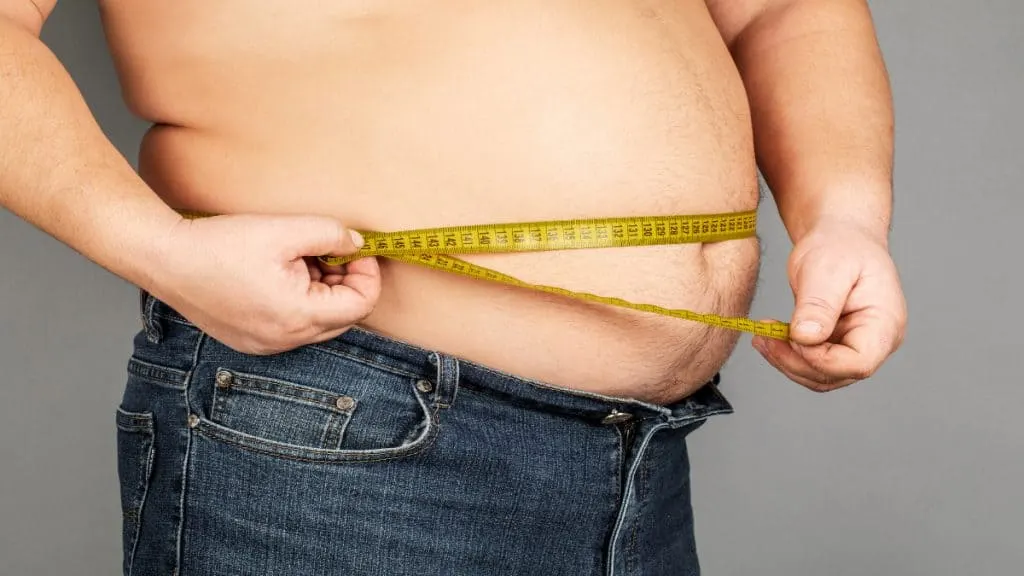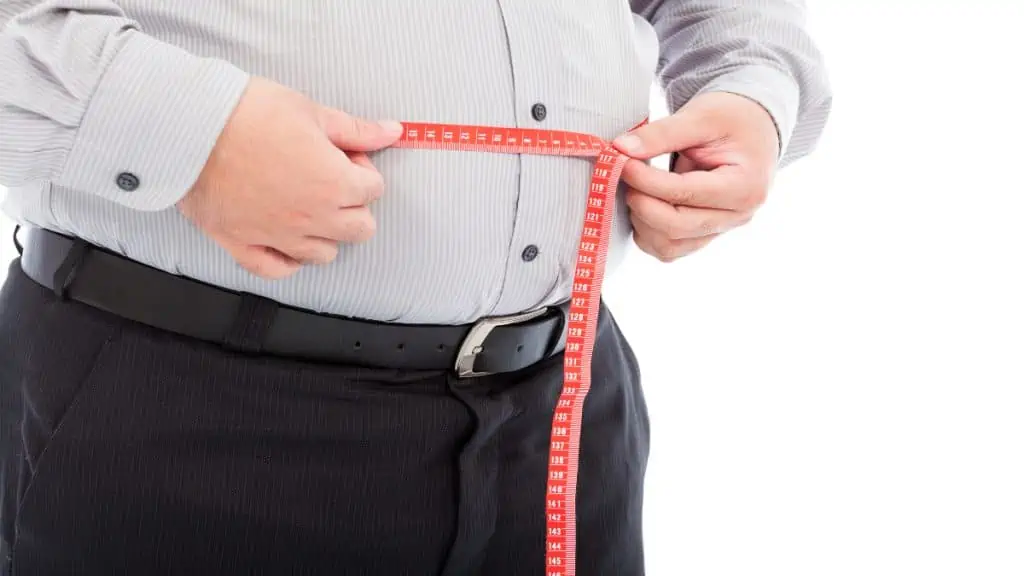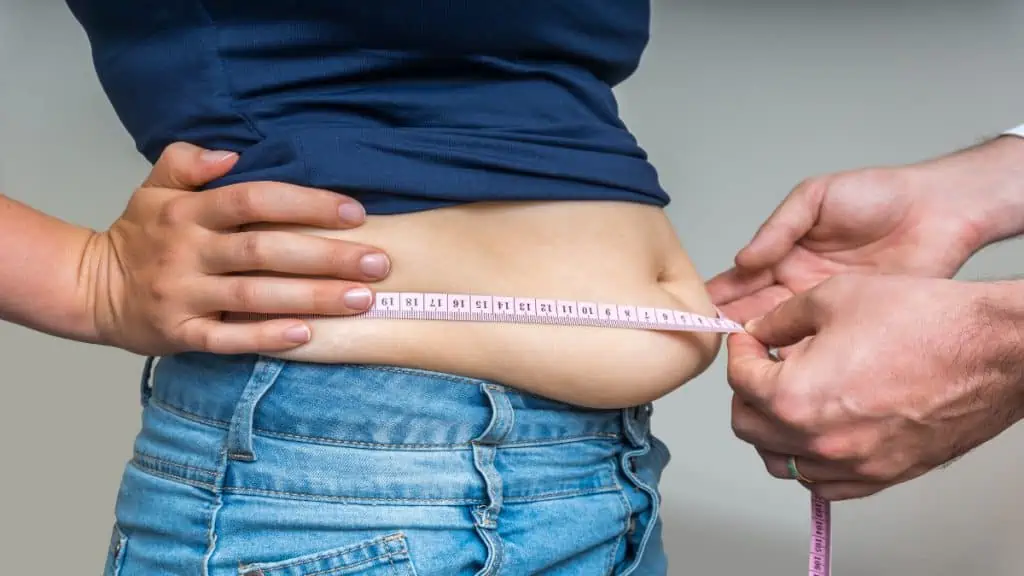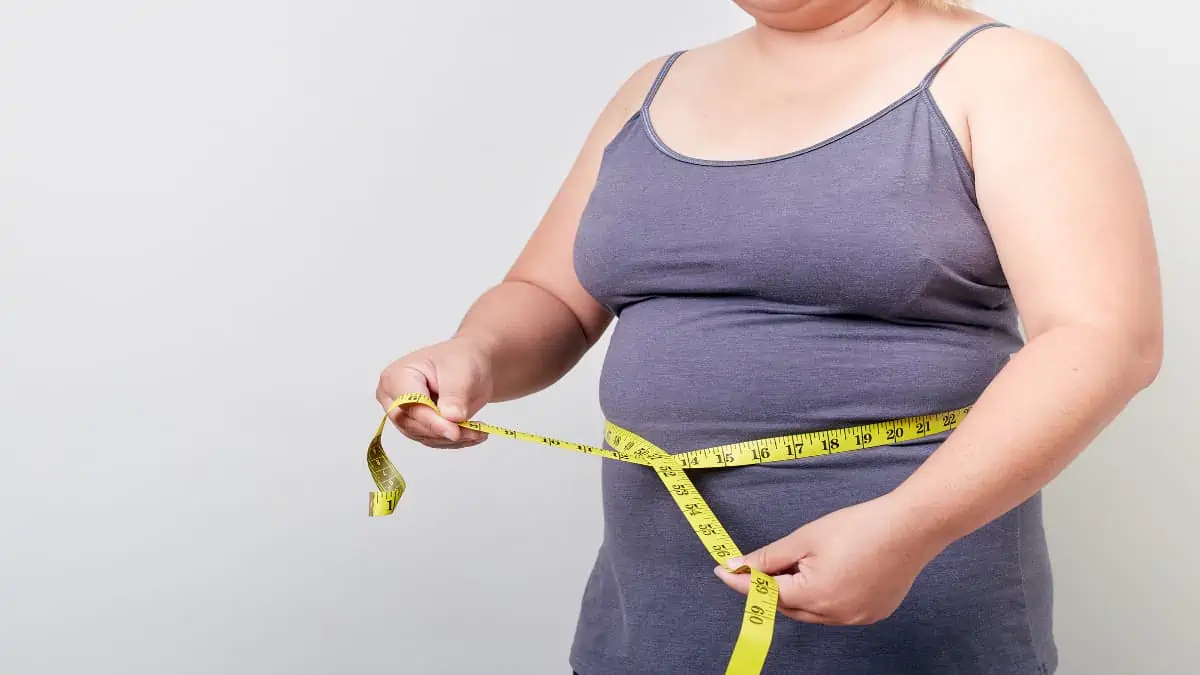How bad is it to have a 45 inch waist?
According to US anthropometric data, a 45 in waist is 5 inches bigger than the average male waist size (which is already too big for a man to live in good health) and 7 inches bigger than normal for a woman.
With these statistics in mind, this article explains just why having a 45″ waist is bad for your health.
After that, we’ll explore some proven strategies for shedding stomach fat and discuss how long successful weight loss will take.
- 40 inch waist
- 41 inch waist
- 42 inch waist
- 43 inch waist
- 44 inch waist
- 46 inch waist
- 47 inch waist
- 48 inch waist
- 49 inch waist
What does a 45 inch waist look like?

Your gender, height, build, and body fat percentage all affect how your 45 inch waist will look. For example, a 45 in waist will likely look smaller on a man than on a woman since men are generally taller and carry more abdominal muscle mass.
The reason for this is that when you’re tall rather than short, a given waist size makes up a smaller part of the surface area of your overall body.
Similarly, when you have a muscular core, a greater percentage of your abdominal mass will consist of muscle tissue. Of course, virtually nobody has a 45 inch waistline due to only having well-developed abs and obliques.
Indeed, a 45 inch waist usually takes years to accumulate. You don’t just eat one bad meal or eat a few too many calories one day and then pile on the weight. It’s usually a combination of a sedentary lifestyle and gluttony that causes weight gain. Of course, some people still have a natural tendency (a genetic predisposition)to store more fat than others.
How big is a 45 inch waist for a man?

Is a 45 inch waist too big for a man to live in good health? Yes, a 45 inch waist is too large for a man to enjoy his best health because an excessively large waistline is associated with an increased risk of cardiovascular diseases. [1]
Besides the worrying long-term health effects, carrying excess weight can also put pressure on your joints and cause pain, which can reduce your quality of life. [2]
Of course, there’s no need to have a ripped physique in order to be healthy (indeed, many fitness models that you see actually have poor health due to taking performance-enhancing drugs).
Still, because a 45 inch belly is indicative of being obese, you should still seek to slim your waistline by at least 8 inches if you want to significantly lower your risk of chronic disease.
How large is a 45 inch waist for a woman?

How large is a 45 inch waist for a woman? A 45 inch waist is around 7 inches larger than average for a woman. In fact, research shows that abdominal obesity is particularly problematic for females because, compared to men, women usually have a lower amount of abdominal muscle mass. [3]
Therefore, at an equivalent waist size, a female waist will typically consist of a higher proportion of fat tissue.
Additionally, taller women can get away with having a larger waistline because scientists often recommend limiting your waist measurement to half of your height.
Of course, with a 45 inch waist size, most women will naturally have an excessively big waist-to-height ratio. Thankfully, you can bring your measurements down by making some simple changes to your lifestyle—by improving your diet, optimizing your sleep, and performing a regular exercise routine.
How can you successfully slim your 45 in waist?

If you want to lose weight, then you need to be in an energy deficit, which essentially means consuming fewer calories than your body requires to maintain its current mass.
So, if you currently eat 2500 calories, reduce your intake to 2000 calories and observe the reduction in weight. If you’re losing 1-2 pounds per week, that’s a great indication that you’re slimming your waist.
Stick to whole food sources and make sure to eat a balanced diet. Junk foods may well be convenient, but they’re most often devoid of nutrients and not very filling, which can lead to cravings.
Exercise is highly beneficial for your general health and especially good for losing weight because being active burns far more calories than sitting on the sofa. You might want to start with simple types of exercise like walking and bodyweight training. Once you get used to moving your body, you can progress to more vigorous exercise like jogging. [4]
You can easily perform fat-burning and ab-sculpting exercises like burpees, squats, and mountain climbers without going to the gym. These movements, while challenging when performed at a high intensity, work multiple muscles and burn a high amount of calories in a short space of time.
Conclusion: Should you be concerned about having a 45 in waist?

While you shouldn’t let anyone tell you that you need to be skinny or have a certain type of physique, it’s accurate to say that almost nobody can live in good health while having a 45 inch waist.
The good news is that you’re in control. With a bit of effort, you can reduce your calories and see sizable amounts of weight loss. And with extra effort, you can accelerate the stomach-shedding process by cranking up your exercise intensity and getting your sweat on at home (circuit training is particularly effective in this regard).
There’s also no need to rush unless your doctor has prescribed fast weight loss, which is unlikely. Don’t slash your calories in a bid to shed as much fat as possible in the first few weeks because such diets are unsustainable and will likely leave you lacking in energy and vitality.
Instead, eat in a moderate calorie deficit and stick to a healthy, whole foods diet. After all, losing one pound per week can result in inches off your 45 in waist after a few months.
References
- Chen, G., Liu, C., Chen, F., Yao, J., Jiang, Q., Chen, N., Huang, H., Liang, J., Li, L., & Lin, L. (2011). Body fat distribution and their associations with cardiovascular risk, insulin resistance and β-cell function: are there differences between men and women? International Journal of Clinical Practice, 65(5), 592–601. https://doi.org/10.1111/j.1742-1241.2011.02653.x
- Magliano, M. (2008). Obesity and arthritis. International Menopause Society, 14(4). https://pubmed.ncbi.nlm.nih.gov/19037063/
- Schooling, C. M., Jiang, C. Q., Zhang, W. S., Lam, T. H., Cheng, K. K., & Leung, G. M. (2009). Visceral adiposity would be expected to predict incident diabetes better in women than men. Diabetologia, 53(2), 393–395. https://doi.org/10.1007/s00125-009-1613-3
- Collins, S. (2011, August 29). The Truth About Belly Fat. WebMD. https://www.webmd.com/diet/features/the-truth-about-belly-fat

